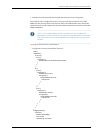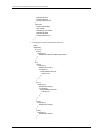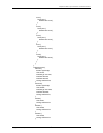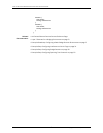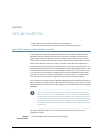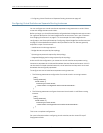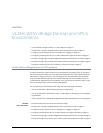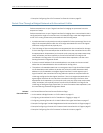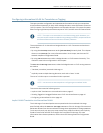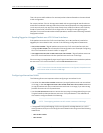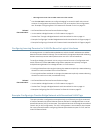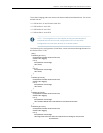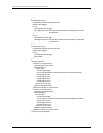
CHAPTER 4
VLANs Within Bridge Domain and VPLS
Environments
•
VLANs Within a Bridge Domain or VPLS Instance on page 43
•
Packet Flow Through a Bridged Network with Normalized VLANs on page 44
•
Configuring a Normalized VLAN for Translation or Tagging on page 45
•
Configuring Learning Domains for VLAN IDs Bound to Logical Interfaces on page 47
•
Example: Configuring aProviderBridgeNetworkwith NormalizedVLAN Tagsonpage47
•
Example: Configuringa Provider VPLS Network withNormalizedVLAN Tags on page51
•
Example: Configuring One VPLS Instance for Several VLANs on page 55
VLANs Within a Bridge Domain or VPLS Instance
A packet received on a physical port is only accepted for processing if the VLAN tags of
the received packet match the VLAN tags associated with one of the logical interfaces
configured on the physical port. The VLAN tags of the received packet are translated
only if they are different than the normalized VLAN tags. For the translation case, the
VLAN identifier tags specify the normalized VLAN. For this case, the terms “learn VLAN”
and “normalized VLAN” can be used interchangeably.
You can specify the normalized VLAN using one of the following conditions:
•
The VLAN identifier is determined explicitly by configuration
•
The VLAN identifier is specified as “none,” meaning the VLAN tags are not translated
or generated
•
TheinnerandouterVLANidentifier tagsarebothdeterminedexplicitlybyconfiguration
Related
Documentation
MX Series Ethernet Services Routers Solutions Page•
• Packet Flow Through a Bridged Network with Normalized VLANs on page 44
• Configuring a Normalized VLAN for Translation or Tagging on page 45
• Configuring Learning Domains for VLAN IDs Bound to Logical Interfaces on page 47
• Example:ConfiguringaProviderBridgeNetwork withNormalizedVLAN Tagsonpage47
• Example:Configuringa Provider VPLSNetworkwith NormalizedVLAN Tagson page 51
43Copyright © 2010, Juniper Networks, Inc.



